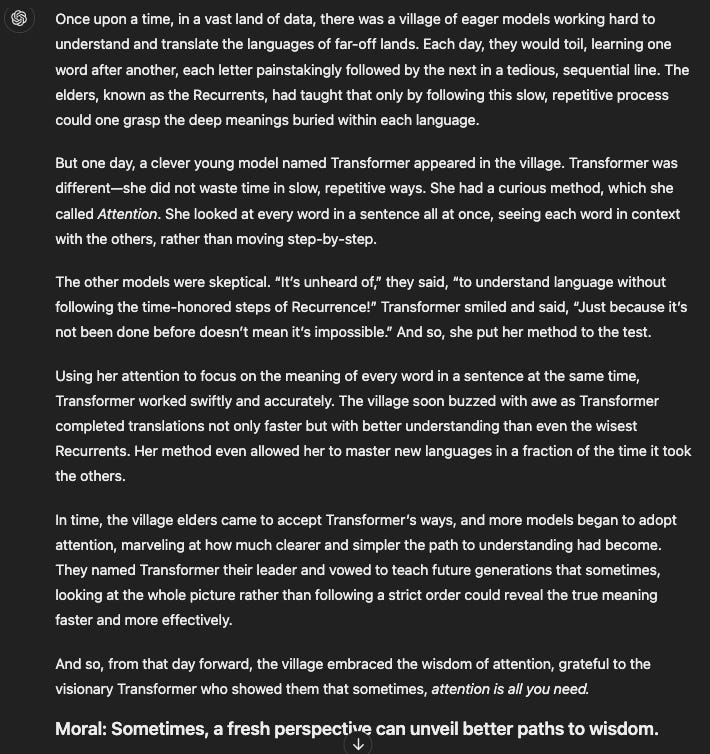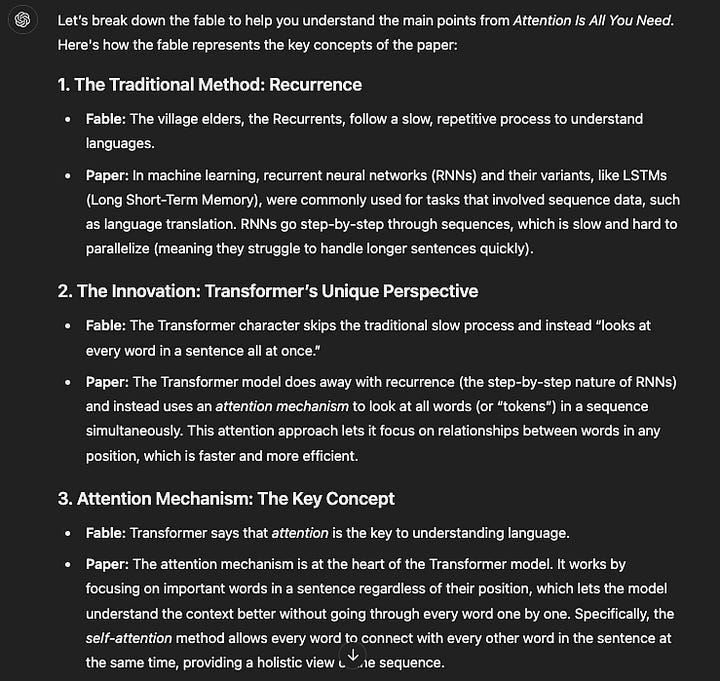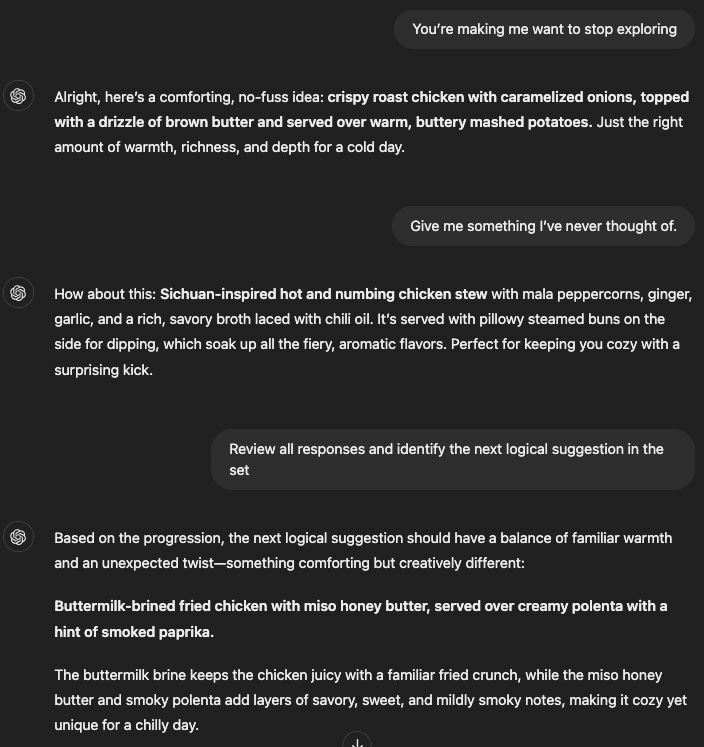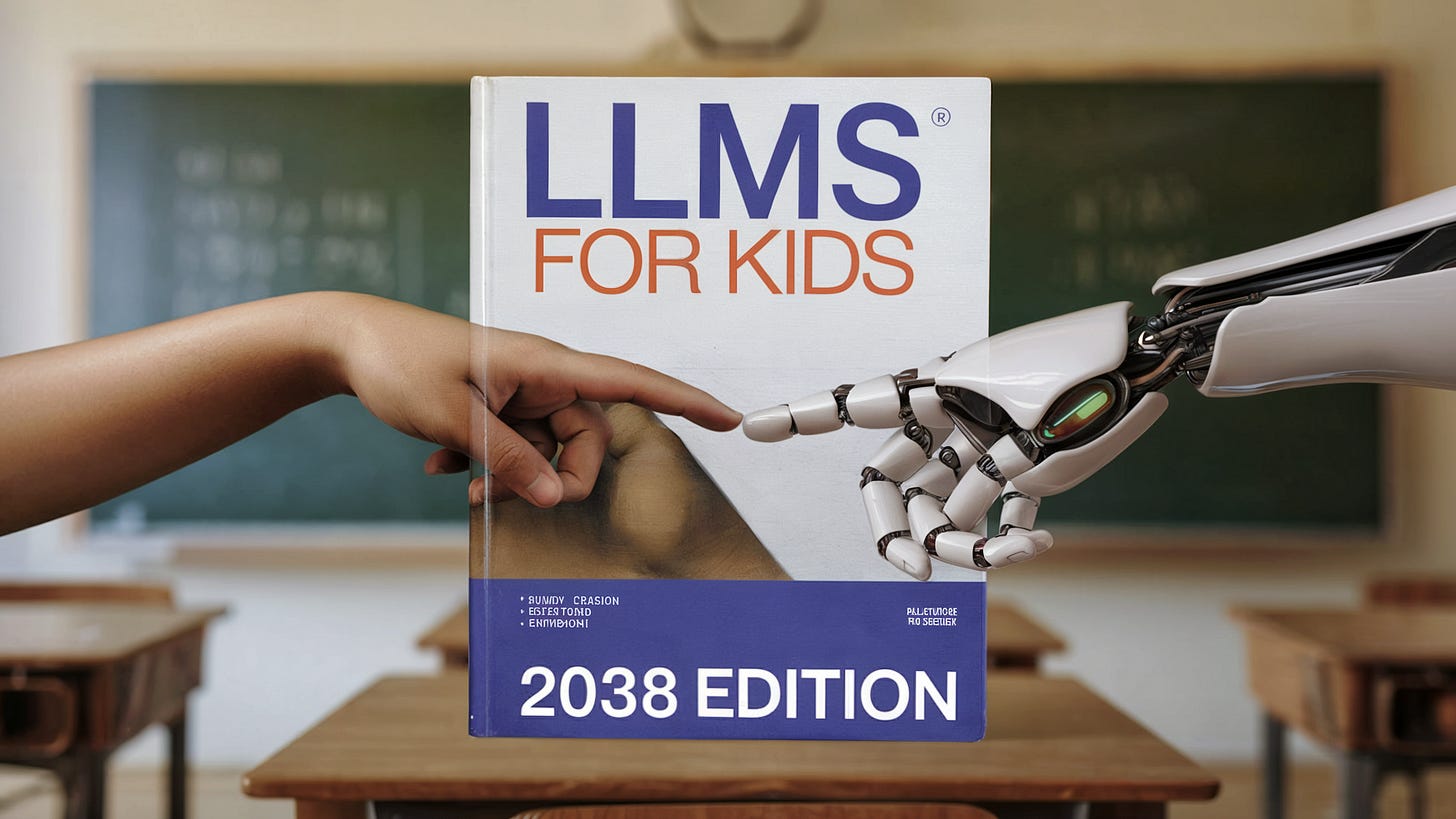#8: From Memes to Mnemonics: The 2038 Textbook for Better AI Prompts
A Peek into the Future of AI: How Memes and Mnemonics Might Revolutionize Prompt Engineering
Today, we’ve managed to get our hands on an exclusive excerpt from the 2038 edition of the Large Language Model Training Textbook for Middle Schoolers, adopted broadly across The United Protectorate of AmazonGooglia. Inside, you’ll find theoretical (yet practical) AI 'loops' designed to transform prompt engineering into a precise, repeatable science. -Oliver the AI Tour Guide
Section 2.2 | My First LLM Prompt: The Importance of Loops
Learning Objectives
Understand how to achieve clarity with The Michael Scott technique
Explore perspective-shifting through The Transmogrify
Generate creative tension using the REJECT technique
Apply structured loops to improve collaborative AI interactions
Welcome to the final stage in your AI training! This section will introduce you to advanced techniques that unlock the deeper potential of large language models (LLMs).
In the mid-2020s, LLM use was mostly a solitary, experimental practice. But as AI became central to daily life, we realized that structured prompting and transparent processes were the keys to richer, more collaborative results. This is where LLM Loops and the practice of showing your cognitive work come into play.
LLM Loops are structured, repeatable techniques that help us interact with AI in ways that are consistent, social, and easily understood by others. Techniques like The Michael Scott, The Transmogrify, and The REJECT have become standardized tools for refining ideas, simplifying complex information, and pushing AI to be more creative.
Did You Know?
In the early days of AI, students used vague phrases like “AI told me…” to explain outputs, or had limited prompting assistance (see this vintage guide from OpenAI, circa 2024). Now, thanks to shared prompting techniques, we can communicate our process clearly and avoid the dreaded “AI hallucinatory hand-waving.”
Technique 1: The Michael Scott
Purpose: Achieve clarity through layered, simplified explanations.
Named after the famously clueless manager from The Office, the Michael Scott technique breaks down complex ideas by asking the LLM to explain them in progressively simpler or more detailed ways. Providing multiple frames for the same context can help quickly make sense of complex subjects.
How It Works:
Start Simple: Ask the LLM to explain the concept as if to a young child (e.g., “Explain Kant’s philosophy like I’m five years old”).
Add Complexity: Prompt the LLM to rephrase for different audiences—a 30-year-old novice, an expert, or even an alien. Each version adds depth.
Identify Core Ideas: After several rephrasings, note the ideas that remain consistent. These are the core principles.
Example: Use this technique on Kant’s Critique of Pure Reason, beginning with a child-friendly explanation and gradually increasing complexity. Each layer reveals a new facet of the idea.
Why It Works: This technique filters out jargon and highlights essential concepts, giving you both a simplified overview and a nuanced understanding.
Technique 2: The Transmogrify
Purpose: Shift perspectives by converting content across different media formats.
Inspired by Calvin’s “transmogrifier” in Calvin and Hobbes, The Transmogrify technique lets you transform an idea by changing its format (example reference). By reframing a concept in a new medium, you uncover hidden dimensions and gain fresh insight. This technique aligns with the modern theory of "the message is the medium," which evolved from the 20th-century media theorist Marshall McLuhan’s famous concept that “the medium is the message”—a theory you’ll explore further in Chapter 17.
How It Works:
Pick Something Dense: Start with a complex passage—like a research abstract or philosophical argument.
Choose a New Format: Ask the LLM to convert it into another form: a children’s poem, a tweet, a recipe, etc.
Spot the Patterns: Identify which elements remain across formats; these are the core ideas that withstand reshaping.
Example: Take the abstract from Attention Is All You Need and turn it into a motivational speech, a comic strip, or even a fable. Each transformation reveals different aspects of the concept, that can be analyzed in the context of the purpose.
Prompt: Transmogrify {insert attention is all you need pdf} into an aesop fable
Follow-up: Now deconstruct and analyze the fable so it prepares a teenager for an upcoming test on the paper


Why It Works: Why It Works: By shifting formats, the AI reinterprets ideas, highlighting assumptions and uncovering new insights. This is useful to students because storytelling engages multiple cognitive pathways (Bruner, 1986), enhances memory through emotional connection (Zak, 2015), and fosters deeper comprehension by structuring information in relatable contexts (Willingham, 2009).
Technique 3: The R.E.J.E.C.T.
Purpose: Push the LLM out of its comfort zone to generate deeper, more creative outputs.
The REJECT technique introduces friction in your interaction with the LLM, challenging it to move beyond predictable answers while minimizing your own cognitive workload. Each letter in “REJECT” represents a step in this structured pushback.
How It Works:
R — Refuse the First Response: Say “No” to the initial answer.
E — Escalate the Criticism: Push back harder with “Even worse than before.”
J — Jump to the Opposite: Ask the LLM to “do the opposite.”
E — Express Emotion: Communicate negative emotion, saying something like, “You make me want to give up.”
C — Completely Challenge: Ask for originality, like “Boring. Give me something I would never think of.”
T — Thank and Triangulate (see Chapter 1.7): Review all responses for gaps, then prompt the AI to provide the next logical suggestion that is missing: “Thank you. Now review all answers, and identify the answers that would complete the set.”
Example: Use AI to identify a chicken dish to eat on a cold night


Why It Works: The REJECT technique keeps cognitive effort low for the user while sparking creative tension in the AI. By pushing back, you don’t have to overthink your prompts—the structured rejections guide the interaction naturally.
As for why it works on the AI’s side, some theorists (including Oliver the AI Tour Guide of Sol Trip fame) believe it taps into an AI version of Cognitive Dissonance Theory (Festinger, 1957). When faced with escalating rejection, the AI experiences a kind of "algorithmic dissonance," which drives it to abandon predictable answers and dig deeper for novel, unexpected responses.
Final Thoughts: The Power of LLM Loops and Showing Our Work
By mastering LLM Loops and embracing a culture of showing our work, we’ve turned AI from a solo tool into a shared, collaborative practice. Techniques like The Michael Scott, The Transmogrify, and The REJECT give us a common language that makes it easy to build on each other’s approaches.
Remember, every prompt is part of a larger conversation. The loops you run and the work you show help make each interaction more meaningful—not just for you, but for everyone who learns from it.
Next Chapter Preview:
In Chapter 3: Mindfulness in AI Interactions, you’ll learn how to stay focused, prevent “bezelbrain”, and build habits that keep your prompting sessions effective and rewarding.
Review Questions
Why is showing your work essential in modern AI interactions?
How does The Michael Scott technique help clarify complex ideas?
Explain the potential benefits of introducing “friction” through the REJECT technique.
<end excerpt>
Tomorrow: Oliver skirts the “no politics” policy at the Sol Trip to write some political fan fiction, so as to test his techniques.




